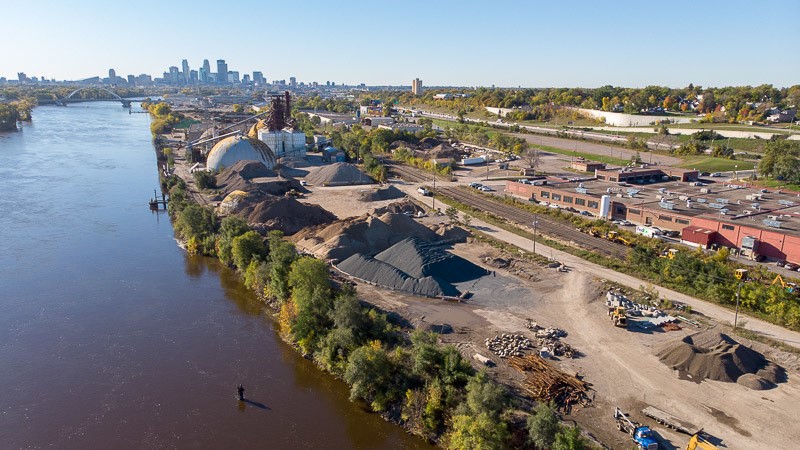
The Mississippi Watershed Management Organization (MWMO) announced on July 20 that it has awarded a $2.6 million grant to the Minneapolis Park and Recreation Board (MPRB) for shoreline and habitat restoration work at the Upper Harbor Terminal site.
Pending formal acceptance by the MPRB, the funding represents the first of several anticipated MWMO grant awards for green infrastructure at Upper Harbor Terminal (UHT), a 53-acre former industrial site located along the west bank of the Mississippi River in North Minneapolis. UHT is being redeveloped to provide new public parkland, housing and commercial space. MPRB is developing a new 19.5-acre riverfront regional park at the site, representing the largest single addition of land to the Minneapolis Park system in decades.
The MWMO has been working with MPRB, the City of Minneapolis, and other UHT project partners to identify and fund opportunities for large-scale stormwater management and habitat restoration throughout the property.
“We’re extremely pleased to make this initial financial commitment to environmental improvements at Upper Harbor Terminal,” said MWMO Executive Director Kevin Reich. “This project represents a once-in-a-lifetime opportunity to make the North Minneapolis riverfront a more accessible, vibrant and ecologically sound place for all people, and for generations to come.”
Approved by the MWMO Board of Commissioners at their July 12 meeting, the $2.6 million Capital Project Grant will go toward several site improvements, including riverbank and shoreline restoration and a pedestrian overlook.
Currently the UHT site is largely non-vegetated. Along the riverbank and shoreline, it contains a significant amount of non-native and invasive species, which cover its steep and unstable slopes. The MWMO funding will be used to regrade a gentler slope that will support the establishment of native vegetation combined with oak forest plantings similar to what exists in the Mississippi River Gorge. These plantings, and the more gradual slope that makes them possible, will prevent the loss of shoreline, stabilize the riverbank soils, and restore habitat along the Mississippi River Corridor Critical Area (MRCCA).
The creation of the pedestrian overlook, which will be located directly across the river from the heron rookery, will allow bike and pedestrian trails to be routed in such a way as to provide better habitat and stormwater connectivity along a new parkway. The overlook will also become a headwall to a restored riverbank ravine feature and pipe overflow from a portion of a future district stormwater system.
“This is an important first step in transforming Upper Harbor Terminal into a welcoming new public space that is climate-resilient and restorative to the community,” Reich said. “We look forward to continuing discussions with our partners to build district-level stormwater management and habitat restoration into the final designs.”
The redevelopment at UHT will occur in multiple phases over the course of several years.


